Last week, we introduced you to our two sets of decodable word lists, and we even suggested you might want to organize them in a binder for easy access. And today, we share seven simple and practical ideas for using these two collections of word lists and sentences. We hope you find these seven ideas helpful as you work to make learning to read easier for the students you support.
1. Supplement the words in your phonics curriculum. -These lists are an easy source for targeted practice that aligns with your phonics lesson. For example, if you’ve been teaching the consonant digraph SH but find your students need more practice, you can pull out the decodable word lists and sentences for SH and go to town!
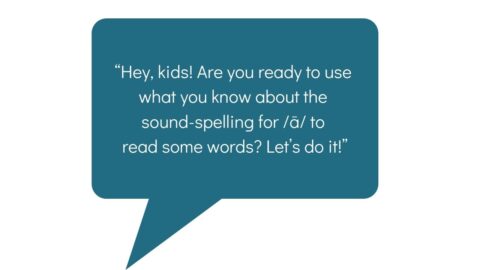
2. Provide blending practice in whole group phonics lessons. – What is a blending practice? It’s practice using what you know about sound-spellings and blending the individual sounds together into a whole word. For every new phonics concept students are learning, they need LOTS of blending practice at the word level, as well as in context. Too often, word level blending practice has been neglected in our classrooms because we’ve been told that skills in isolation are not as valuable as skills practiced in context. But knowing letters and sounds is not enough to read. Children have to know how to blend those sounds together to form words they can recognize, and becoming proficient and automatic with blending individual sounds takes lots of practice. So, pull out the word lists for each skill and select a few for blending practice in each lesson. And, don’t forget to sprinkle in some words from previous skills for cumulative review. For more information about the specifics of blending practice and differences between cumulative and continuous blending, check out Chapter 3 of Shifting the Balance.
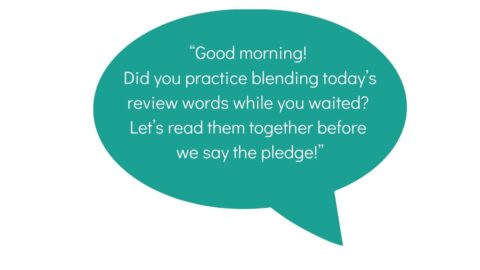
3. Continue blending practice across the day. – Blending practice doesn’t have to be reserved for whole group phonics instruction, it can be woven into transition routines, morning meetings, small group instruction, and more. Some teachers we know use a single decodable word, a short list, or even a decodable sentence as part of the morning message every day. Patricia, a first grade teacher, holds a collection of file cards on a ring as she greets students at the door each morning. Each child reads a “secret word” before crossing the threshold. The words contain new and review skills.
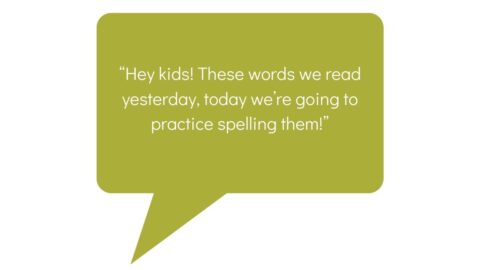
4. Dictate sentences within a phonics lesson – Remember those words you selected for blending practice yesterday? Well, that same list (or a subset of it) is perfect for word level dictation today. Since you’re always looking for ways to save time AND make learning stick, recycling the words you used for blending practice yesterday for spelling practice today does both! It simplifies planning, and it helps deepen the lexical quality of these words by giving them multiple opportunities to process and analyze the letter strings.
5. Gather formative assessment data through weekly word dictation. – After teaching a particular phonics skill, (i.e. CVC words with short e), you can get a really clear and accurate assessment of children’s understanding through a short formative spelling assessment. Simply choose a few words from the list corresponding to the current concept (i.e. peg, wed, bet). We like choosing some of the less common words for the assessment. We also like to include a few words from the previously taught skill(s) to make this quick assessment cumulative, cuing us into any past concepts that have not been learned as well as we’d hoped. For instance, if the previous instructional focus was short a, you might include van and pat as review words.
Hint: By mixing the order of the words containing the new and past skills, you’ll get a more authentic view of which spelling patterns have been mastered. And while you’re at it, why not take another minute or to include a recently taught high frequency word to check for mastery. This formative assessment of new and past learning will take just a few minutes.
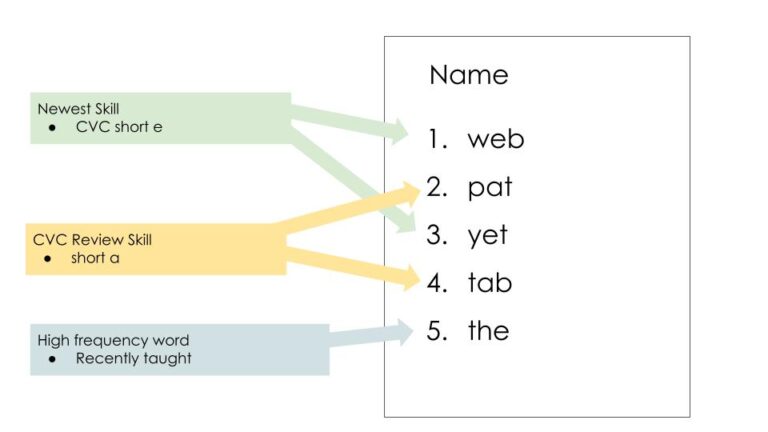
6. Gather formative assessment data through weekly sentence dictation. – Of course, dictation isn’t limited to word lists. It can be done with full sentences, as well. The advantage of using a dictation sentence for weekly formative assessment is that it allows you to check in a bunch of things at once, such as . . .
- mastery of the newest phonics skill
- maintenance of past phonics skills
- mastery 1-2 high frequency words that have been taught explicitly
- development of writing conventions, such as capitalization and punctuation
We’ve provided a few examples below.
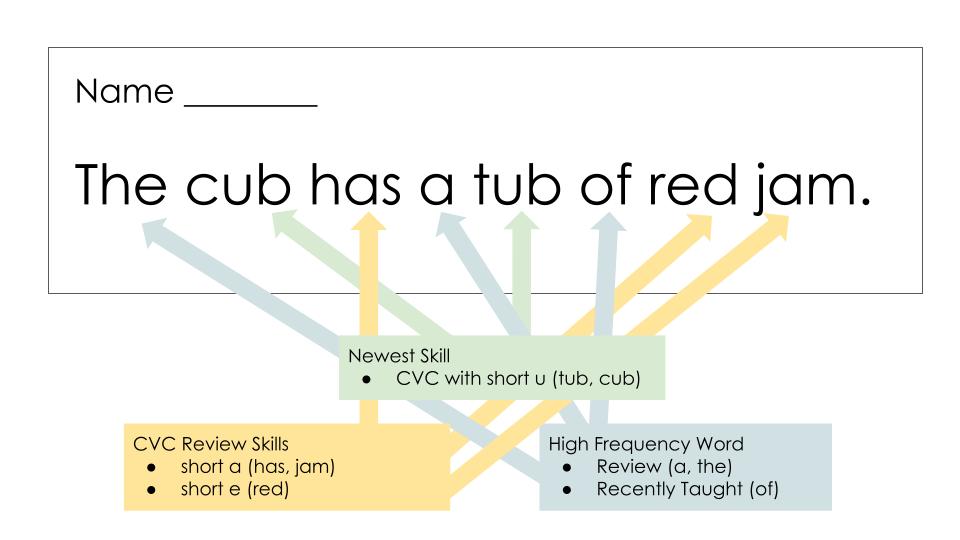
7. Create decodable sentences and paragraphs for reading practice. – If you’re like most teachers we know who are trying to shift to more brain-friendly instruction, you probably don’t have as many decodable texts for each phonics concept as you wish you did. We hope your school leaders will be able to allocate resources for the purchase of more high quality decodable texts. But as a low cost solution in the meantime, you and your colleagues might decide to write a few simple passages yourself. Below are a few sample passages we’ve written.

You can use the passages for shared reading or small group instruction, and also make a photocopy for each child to keep in a binder of passages. The more passages they accumulate in their binder, the more access they have to high volume practice with new and review skills. Some teachers we know even put the whole list of words for each concept into the binder, as additional blending practice at the word level.
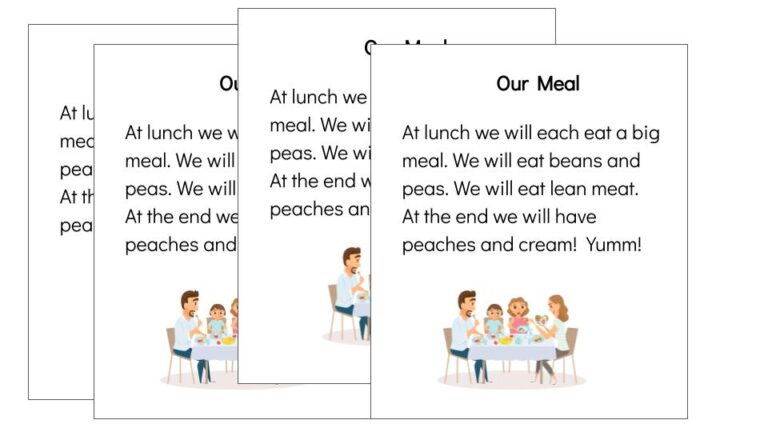

-

Jan Burkins and Kari Yates are authors, speakers, and consultants, who are dedicated to helping teachers around the world translate reading science into simple instructional moves that help teachers make learning to read easier for their students while still centering meaning-making, engagement, and joy.
Recent Posts

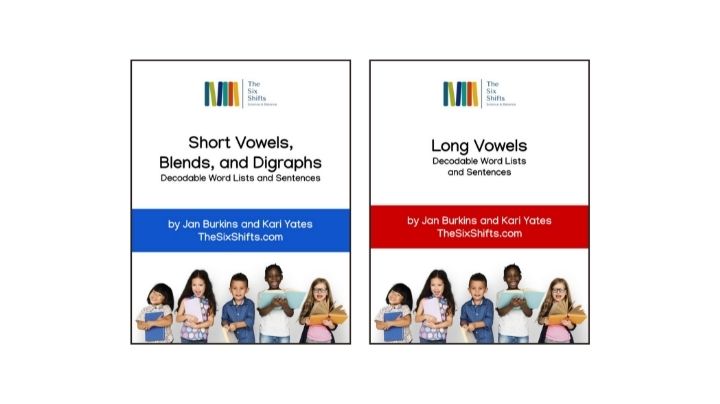

The short vowel sound for i pictures do not match. Inch and ick. Will this be corrected?
Thanks for pointing this out. It’s corrected, now. So if you download again, they should match up!
Thank you! I have enjoyed using the phonics framework this year. A lot of work, but so rewarding to see student growth over time.
We’re so glad to hear it. Student growth is the goal! 😊
We’re Military family homeschooling our special need with autism,”non verbal” anxiety and ADHD helping learn how to read. Everything about is part our current days routine work and progress because he’s responding amazing to every explicit steps of intervention.
So glad to hear he is responding!
Can you please suggest where I can buy some decodable passages? Thankyou
I’m in need of any guidance or suggestions. I am a reading specialist and I have a variety of a groups ranging from CVC to vowel teams. I now have students that need help with the alphabet sounds. I love Shifting the Balance lesson plan template (and have been using them since last year!), but I just don’t know how to make the lesson plan template fit for the alphabet students. Any guidance or suggestions would be greatly appreciated.